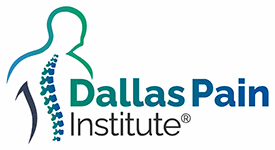Call for an appointment today! (903) 892-1999
Caudal Epidural Steroid Injection
An epidural steroid injection introduces anti-inflammatory drugs into the epidural space to mitigate nerve root inflammation, which can lead to decreased pain in the back or legs. This injection could aid in the healing process by reducing inflammation and potentially provide lasting relief or a few months of pain reduction while the underlying cause of the pain is healing.
Guidelines Before Injection: Inform our team if you have any allergies, especially to iodine. If you are to be sedated, avoid eating on the morning of the procedure. For insulin-dependent diabetics receiving sedation, an adjustment in the morning insulin dose may be necessary due to the fasting requirement. Continue to take routine medications such as those for high blood pressure or diabetes, for instance, Glucophage.
On the day of the procedure, patients are advised to continue their usual pain or anti-inflammatory medications. If you’re on blood thinners like Coumadin, notify the staff so we can plan a suitable schedule for discontinuing the medication before the procedure. For your safety, we strongly recommend that a designated driver accompany you to take you home after the procedure.
Caudal Epidural Steroid Injection Process: The patient is placed on their stomach to allow x-ray visibility of the spine. The back’s skin is cleansed with antibacterial soap. Then, the doctor applies a local anesthetic to a small area of the skin, which may cause a brief stinging sensation. Once the numbing medicine takes effect, the doctor guides a needle into the epidural space, injecting a mix of the local anesthetic and an anti-inflammatory steroid.
Post-procedure Expectations: Unless instructed otherwise by the doctor, there are no restrictions on food, drink, or activity levels after the procedure. If required, a follow-up appointment will be arranged for a subsequent block. Typically, these injections are administered in a series of three, spaced about one month apart. Temporary weakness or numbness in the back or legs may occasionally occur for a few hours. Patients can generally resume their normal activities on the day of the procedure, though we discourage driving on that day.
ALL TREATMENTS
Caudal Epidural Steroid Injection
Cervical Epidural Steroid Injection
Inferior Hypogastric Nerve Block
Kyphoplasty for Vertebral Fractures
Lumbar Epidural Steroid Injections
Lumbar Sympathetic Plexus (Ganglion) Block
Minimally Invasive Lumbar Decompression (MILD Procedure) for Spinal Stenosis
Radiofrequency Ablation of Facet Joints
Radiofrequency Ablation of Genicular Nerves of the Knee
Spinal Cord Stimulation Implants
Superior Hypogastric Nerve Block
Superion InterSpinous Spacer for Spinal Stenosis
Transforaminal Epidural Steroid Injection or Selective Nerve Root Block
